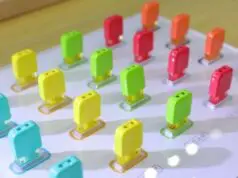
Think of electrical design as constructing a bridge. On one side, you have science with its rigid, unyielding rules. On the other side, you have art, free-flowing and creative.
Electrical design stands in the middle, blending the exacting nature of scientific principles with the imaginative aspects of art. This duality makes electrical design a unique field where creativity and precision coalesce.
The Basics of Electrical Design

Electrical design encompasses the planning, creation, and implementation of electrical systems. These systems power homes, businesses, and industries, ensuring safety, efficiency, and reliability. Whether you are a commercial electrician or working in another capacity, key aspects of electrical design include:
- Circuit Design: Creating circuits that control the flow of electricity.
- System Integration: Ensuring different electrical components work together seamlessly.
- Safety Compliance: Adhering to standards and regulations to prevent hazards.
While these tasks are grounded in science, they also require creativity to develop innovative solutions and overcome challenges.
The Scientific Foundations
Electrical design requires meticulous attention to detail. Every calculation must be precise to ensure safety and functionality. Engineers use mathematical models to predict how electrical systems will behave, ensuring that voltage, current, and resistance are all within safe limits.
Standards and Regulations

Electrical design must adhere to strict standards and regulations. These guidelines, such as the National Electrical Code (NEC) in the United States, ensure that designs are safe and effective. Compliance with these standards requires a deep understanding of both the science and the regulations themselves.
Problem-Solving Skills
Science drives the problem-solving aspect of electrical design. Engineers must diagnose issues, identify root causes, and develop solutions using their technical knowledge. This scientific approach ensures that problems are resolved efficiently and effectively.
The Artistic Side
Creativity plays a crucial role in electrical design. Engineers must think outside the box to create systems that are not only functional but also innovative. For example, designing a compact yet efficient circuit requires creative thinking to balance space constraints with performance needs.
Aesthetics and Functionality

Good electrical design is not just about functionality; it’s also about aesthetics. This is especially important in consumer electronics, where the look and feel of a product can influence its success. Engineers must design systems that are both visually appealing and functional.
Customization and Personalization
Artistic elements come into play when designing custom electrical systems. Each project may have unique requirements, and engineers must tailor their designs to meet these needs. This customization requires a blend of technical skill and creative thinking.
Real-World Applications
Electrical design is integral to architecture and interior design. Lighting, for instance, plays a vital role in creating the ambiance of a space. Electrical designers work with architects to integrate lighting systems that enhance the aesthetic appeal of buildings while ensuring functionality.
Consumer Electronics

The design of consumer electronics is a perfect example of the marriage between art and science. Devices like smartphones and laptops must be both technologically advanced and aesthetically pleasing. Electrical designers work alongside industrial designers to create products that meet both criteria.
Renewable Energy Systems
Designing renewable energy systems, such as solar panels and wind turbines, requires both scientific knowledge and creative solutions. Engineers must innovate to maximize efficiency while considering environmental impact and aesthetic integration into the landscape.
In Summary
Electrical design is a dynamic field that requires a balance of scientific precision and artistic creativity.
Engineers must navigate the strict requirements of standards and regulations while also thinking creatively to develop innovative and aesthetically pleasing solutions.
This blend of art and science makes electrical design a unique and exciting field, where precision meets imagination and functionality meets beauty.













